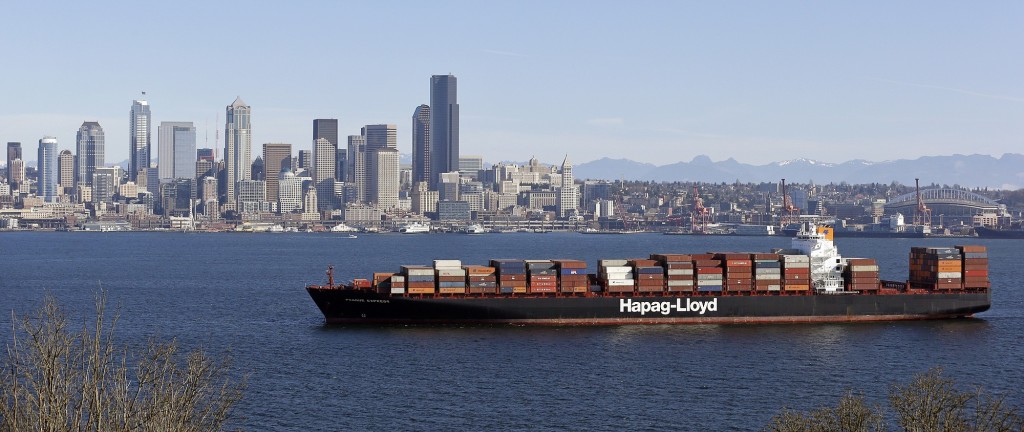SEATTLE — cargo containers are so ubiquitous, they can be hard to see: hauled singly by trucks on the highway, double-stacked on trains passing by, massed together in building-size slabs on container ships chugging up and down Puget Sound, so common they fade into the background like pebbles or power lines.
But if you want to appreciate the sheer volume and velocity of containers moving through Seattle, a weekday-morning visit to Terminal 18 Park on Harbor Island, just alongside the Duwamish Waterway, can be a Road to Damascus moment.
Suddenly, they’re everywhere: stacked in towers as trucks stream by, each one either carrying or about to carry a single container that has been plucked off its ship by a crane and passed from a vehicle to a stack to another vehicle that deposits it on the back of an 18-wheeler bound for wherever. And that’s just 30% to 40% of the containers coming into Seattle. Longshore workers and port officials say the other 60% to 70% leave on trains for even farther afield.
In 2021, the Northwest Seaport Alliance — the combined cargo-port operations of Seattle and Tacoma — reported moving 3.7 million containers, putting it among the top five busiest container ports in North America. (That NWSA merger was engineered to stop the two ports from competing and undercutting each other for shipping-company contracts. Perhaps in the spirit of noncompetition, it does not make Seattle- or Tacoma-specific figures available to the public.)



